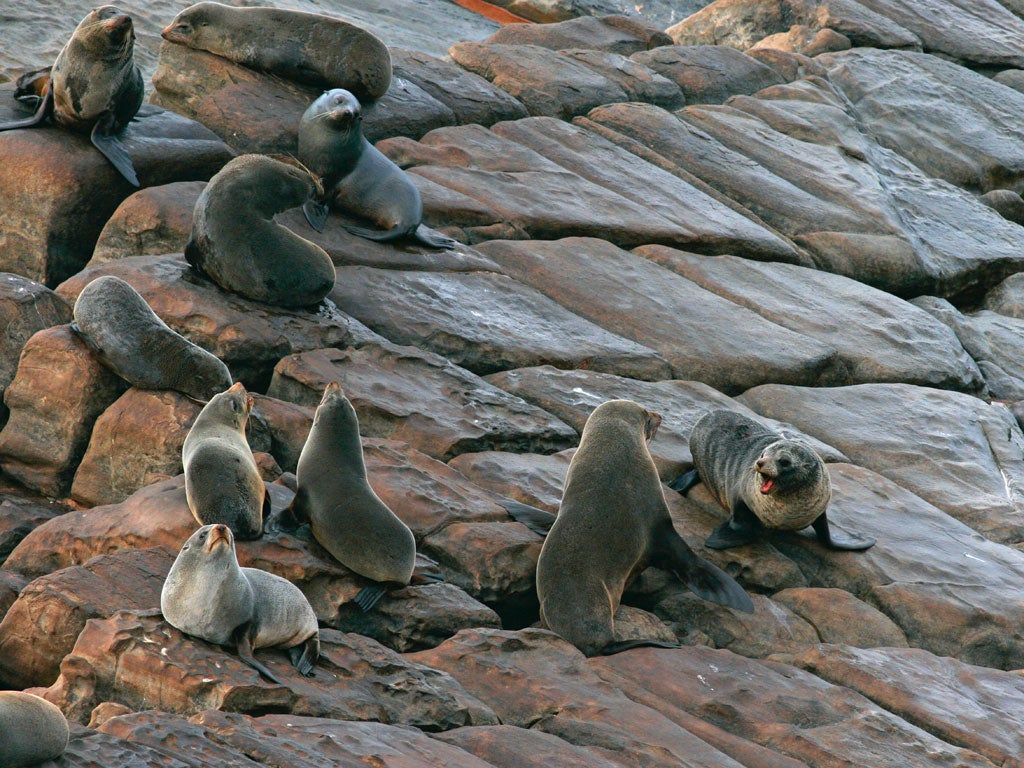Trouble at Kangaroo Island
A resurgent seal population is ganging up on the world's smallest penguin

Your support helps us to tell the story
From reproductive rights to climate change to Big Tech, The Independent is on the ground when the story is developing. Whether it's investigating the financials of Elon Musk's pro-Trump PAC or producing our latest documentary, 'The A Word', which shines a light on the American women fighting for reproductive rights, we know how important it is to parse out the facts from the messaging.
At such a critical moment in US history, we need reporters on the ground. Your donation allows us to keep sending journalists to speak to both sides of the story.
The Independent is trusted by Americans across the entire political spectrum. And unlike many other quality news outlets, we choose not to lock Americans out of our reporting and analysis with paywalls. We believe quality journalism should be available to everyone, paid for by those who can afford it.
Your support makes all the difference.Kangaroo Island, south of Adelaide, is one of Australia's most popular tourism destinations, thanks to its profusion of native wildlife, which includes koalas, kangaroos and the world's smallest penguin species.
But lately there have been dark goings-on in the animal kingdom: the New Zealand fur seals have been devouring the fairy penguins.
Penguin numbers have dropped by half on the island, according to some locals, who want the seals to be sterilised, relocated or even culled. Now they have come up with a new suggestion: shoot them with beanbag rounds – a method more commonly used to control riots – if they approach penguin colonies.
John Ayliffe, who runs nightly penguin-spotting tours, said five penguins had been taken by seals near the town of Kingscote in recent weeks. He warned that the seal population was booming and that, unless drastic measures were taken, the penguins on the rocky island could be wiped out. The lead shot "hits the seals like a punch and it will not penetrate the skin provided it's fired from sensible distances", he said, after which the seals would simply move away.
Conservationists, however, are horrified, and the state environment department says that "interactions between New Zealand fur seals and penguins are a natural phenomenon over which humans have little control". It adds that the seals – a protected species native to Australia as well as New Zealand – are only now recovering from commercial sealing in the past.
Sealing, which was Australia's first major industry after colonisation, nearly eradicated the fur seal. Although it was banned in the 1830s, fishermen were still allowed to kill seals deemed to be "interfering with fishing operations" until 1983.
In recent decades, the Kangaroo Island population has bounced back to about 25,000 – and the number of penguins has declined in tandem, claim tourism operators. One of these, Simone Somerfield, told The Australian last year that visitors to her penguin viewing centre had seen the birds ambushed by seals in the shallows and even chased on to the shore.
"Every now and again you would see one penguin being taken, and I would say, 'Gee, that's amazing, it's like David Attenborough'," she said. "But then it was more and more and more, and then mass kills in which the seals were not even eating them. It was happening within a hundred metres and you have a complete view – it was like watching a horror movie."
Seal populations are believed to have grown partly because of a decline in numbers of sharks and killer whales, their natural predators. Mr Ayliffe, manager of the Kangaroo Island Penguin Centre, said that in South Africa and Namibia seals were "harvested" because there was not enough food for them. "Harvesting is a major tool used internationally to manage numbers. It's only a matter of time before we implement some control measures here."
However, measures such as culling and relocation have been rejected by environmental authorities, who say they have proved expensive and largely ineffective elsewhere. New seals move into areas from which others have been removed, and relocated seals swim long distances to return to familiar feeding grounds. Moreover, penguins form only a small part of the fur seal's diet, according to marine biologists.
Tim Kelly, of the Conservation Council of South Australia, said while he could understand the frustration of tour operators, the growth in seal numbers was a welcome development. He added there were other threats to the penguins, such as attacks by dogs and nest predation, which also had to be taken into account.
Join our commenting forum
Join thought-provoking conversations, follow other Independent readers and see their replies
Comments